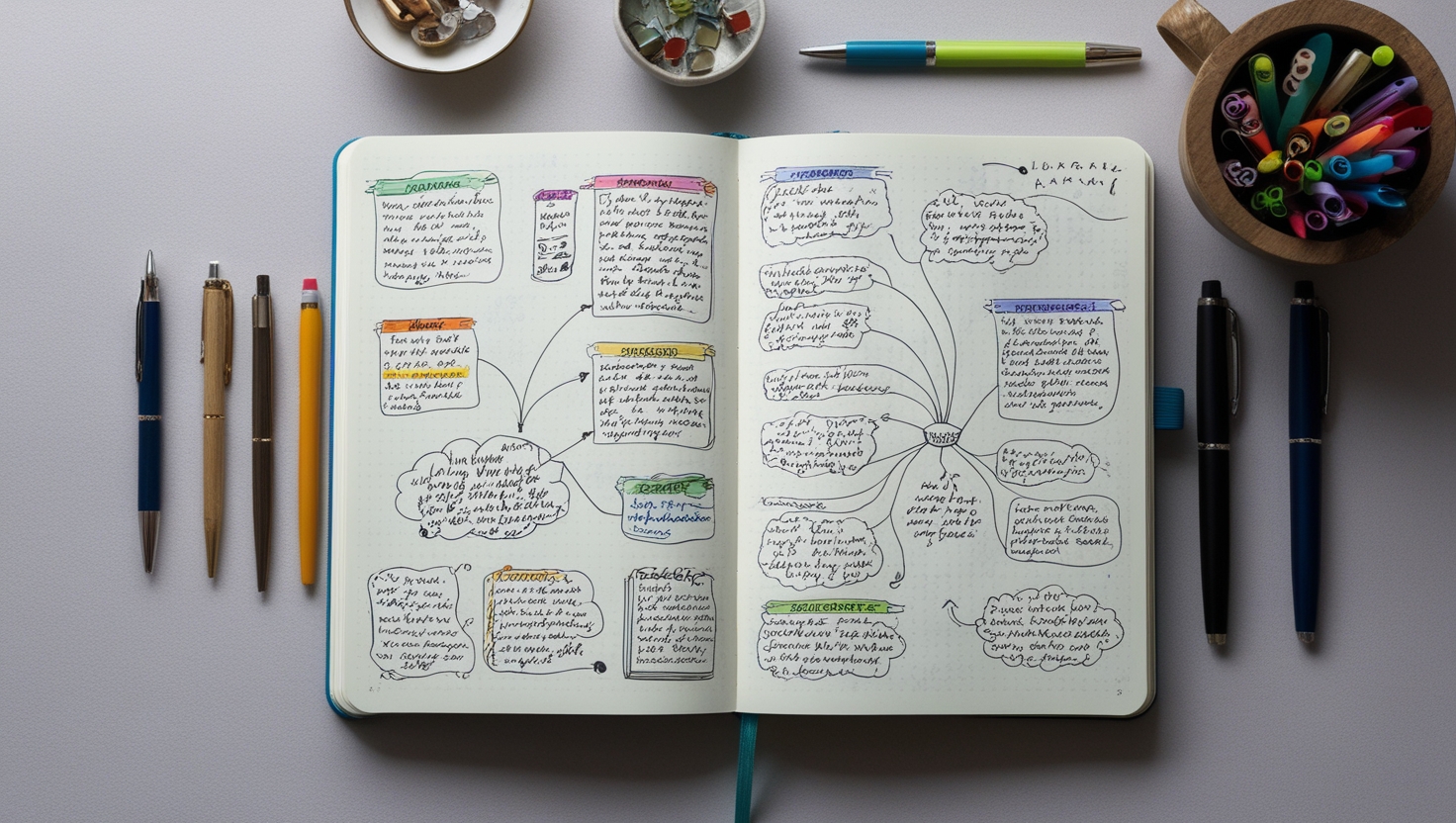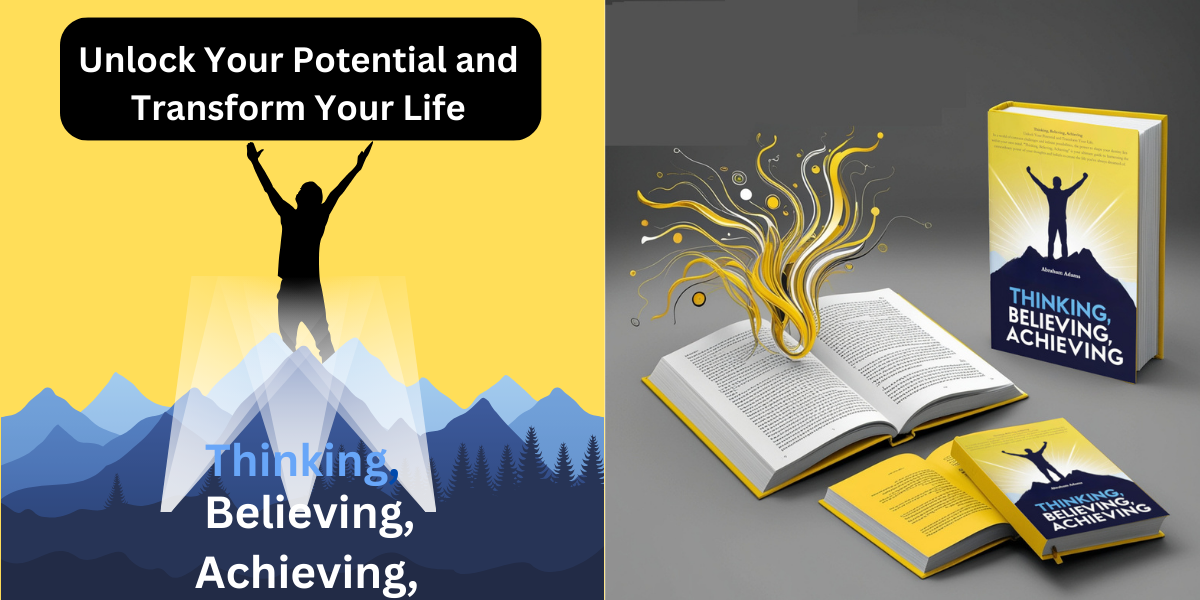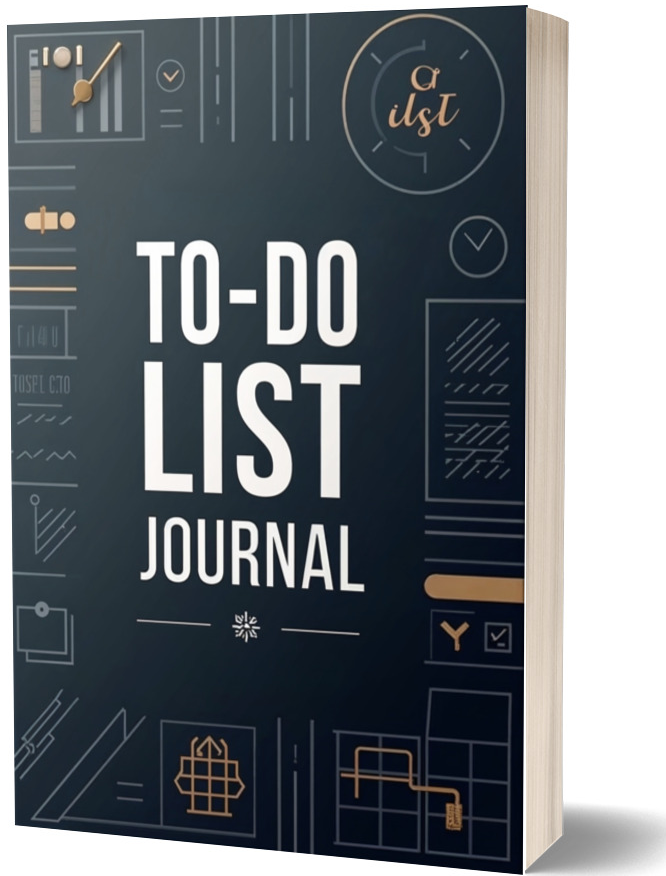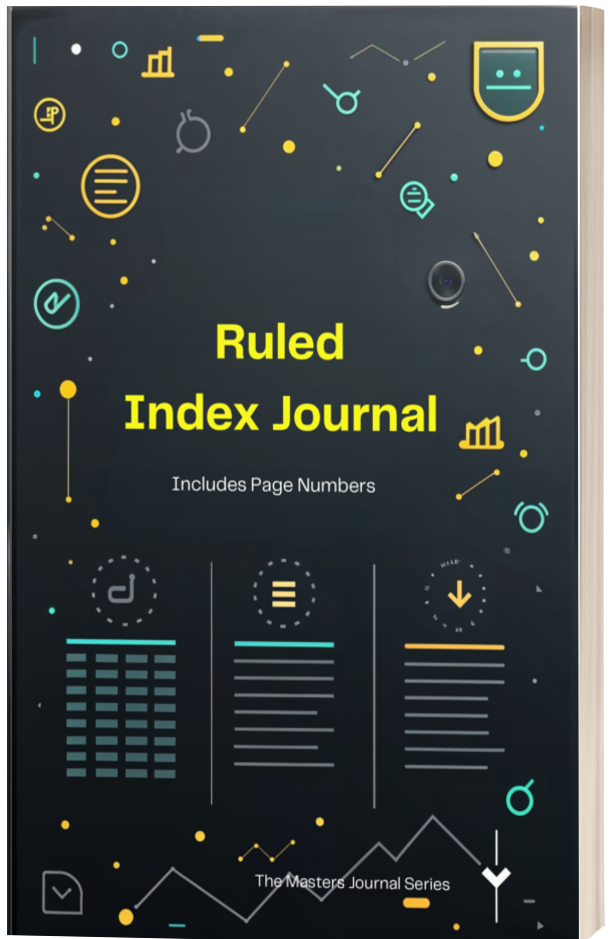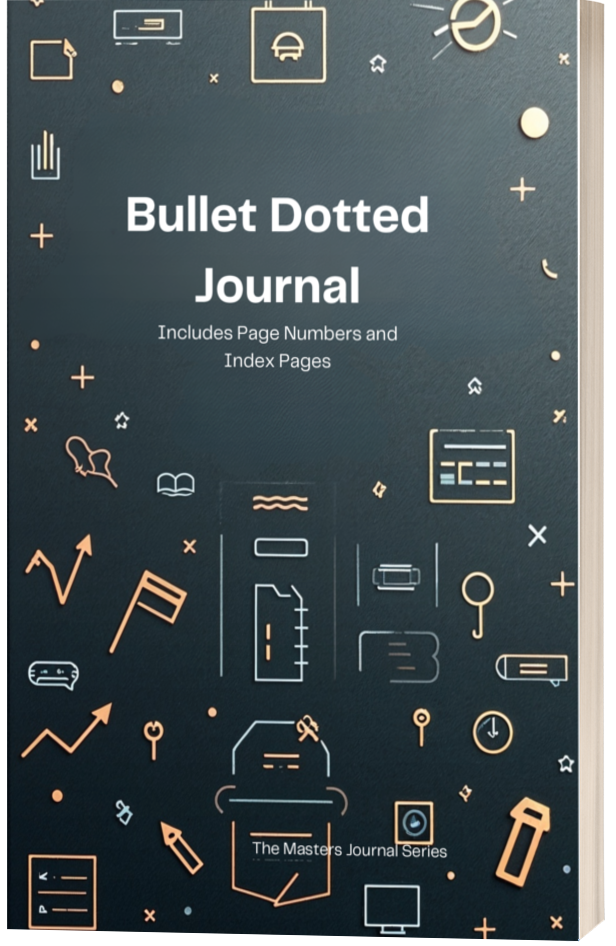Super User
The Role of Thought in Achieving Long Term Success
The Role of Thought in Achieving Long-Term Success
Success is not merely a result of talent or hard work; it begins with the thoughts we cultivate. Our thought patterns shape our actions, influence our decisions, and ultimately determine the outcomes we achieve. To build long-term success, it is essential to understand the role of thought and how to leverage it effectively.
---
The Power of Thought
1. **Thoughts Shape Your Beliefs**
The way you think about yourself and your capabilities directly impacts your beliefs. Positive, empowering thoughts foster confidence and resilience, while self-limiting thoughts can create barriers to success. For example:
- A belief that you can overcome challenges stems from consistent self-affirming thoughts.
- Conversely, doubts and fears often arise from negative internal dialogues.
2. **Thoughts Drive Actions**
Thoughts are the precursors to action. When your mind is focused on goals, you are more likely to take deliberate steps to achieve them. For instance, envisioning success motivates proactive behavior, while dwelling on failure may lead to inaction or self-sabotage.
3. **Thoughts Influence Emotional Resilience**
Your thoughts shape your emotional responses to challenges. Optimistic thinking fosters a growth mindset, allowing you to view setbacks as opportunities to learn rather than as insurmountable failures.
---
How Thought Impacts Long-Term Success
1. **Clarity and Vision**
Successful individuals often have a clear vision of what they want to achieve. Reflective and intentional thinking helps clarify goals and create actionable plans to reach them. Without clear thought, it is easy to drift aimlessly.
2. **Problem-Solving and Creativity**
Innovative solutions often emerge from focused and creative thinking. By training your mind to approach problems from different angles, you can overcome obstacles and find paths to success others might overlook.
3. **Consistency and Discipline**
Thoughts influence habits, and habits are the foundation of consistent effort. Positive mental reinforcement encourages discipline, keeping you aligned with your long-term objectives even when motivation wanes.
---
Cultivating the Right Mindset for Success
1. **Adopt a Growth Mindset**
A growth mindset emphasizes learning and improvement over fixed abilities. This mindset is rooted in thoughts like, “I can develop this skill with practice” or “Failure is a stepping stone to growth.”
2. **Practice Visualization**
Visualization involves imagining your desired outcomes with clarity and detail. This technique aligns your thoughts with your goals, boosting confidence and motivation.
3. **Challenge Negative Thinking**
Negative thoughts can be counterproductive. Reframe limiting beliefs into empowering ones. For example:
- Negative: “I’ll never be good at this.”
- Reframed: “I’m learning and improving every day.”
4. **Foster Gratitude**
Gratitude shifts focus from what is lacking to what is present. By regularly reflecting on your achievements and opportunities, you cultivate a positive mindset that attracts further success.
---
Practical Strategies to Harness Thought Power
1. **Daily Reflection**
Spend a few minutes each day reflecting on your goals, progress, and areas for improvement. Journaling is a great way to capture these insights and maintain focus.
2. **Surround Yourself with Positivity**
The people and environments you engage with influence your thoughts. Choose relationships and spaces that uplift and inspire you.
3. **Set Clear Intentions**
Start each day with a clear intention. Whether it’s completing a task or taking a step toward a long-term goal, intentionality helps focus your thoughts and actions.
---
Conclusion
The role of thought in achieving long-term success cannot be overstated. By cultivating empowering beliefs, maintaining clarity of vision, and aligning your thoughts with your actions, you can create a powerful foundation for lasting achievement.
Success begins in the mind. Invest in your thinking, and watch as it shapes your reality and propels you toward your greatest aspirations.
The Connection Between Thoughts and Emotions: Managing Mental Wellness
The Connection Between Thoughts and Emotions: Managing Mental Wellness
Our thoughts and emotions are deeply intertwined, forming the foundation of our mental wellness. Understanding how they influence each other can empower us to take control of our mental health and create a more balanced, fulfilling life.
This article explores the profound connection between thoughts and emotions, and offers practical strategies for managing mental wellness through this understanding.
---
The Relationship Between Thoughts and Emotions
1. **How Thoughts Shape Emotions**
Thoughts are the lens through which we interpret the world. They shape our emotional responses to events, often more than the events themselves. For example:
- A thought like, “I failed, so I’m not good enough,” can lead to feelings of sadness or shame.
- Alternatively, reframing this thought to, “This setback is a chance to grow,” can foster hope and resilience.
2. **How Emotions Influence Thoughts**
Emotions, in turn, impact our thought patterns. When we feel anxious or stressed, our thoughts may become overly negative or self-critical. Positive emotions, on the other hand, often lead to more constructive and creative thinking.
3. **The Feedback Loop**
Thoughts and emotions operate in a feedback loop:
- Negative thoughts trigger negative emotions, which reinforce further negative thoughts.
- Positive thoughts encourage uplifting emotions, fostering an upward spiral of well-being.
Recognizing this cycle is key to breaking patterns of negativity.
---
Strategies for Managing Mental Wellness
1. **Practice Mindfulness**
Mindfulness helps us observe our thoughts and emotions without judgment. By becoming aware of our mental activity, we can interrupt negative patterns and respond more thoughtfully.
How to Practice:
- Dedicate 5-10 minutes daily to focus on your breath and observe your thoughts.
- Label emotions as they arise (“I feel anxious”) to create distance between you and the emotion.
2. **Challenge Negative Thoughts**
Cognitive distortions—such as catastrophizing or all-or-nothing thinking—can fuel negative emotions. Challenge these distortions by questioning their validity.
Example:
- Negative thought: “I always mess up.”
- Challenge: “Is it true that I always fail? What about times I succeeded?”
3. **Focus on Gratitude**
Gratitude shifts attention away from what’s wrong to what’s good. This simple practice can elevate your mood and foster positive thinking.
How to Practice:
- Write down three things you’re grateful for each day.
- Reflect on why these things matter to you.
4. **Engage in Physical Activity**
Exercise positively impacts both thoughts and emotions by releasing endorphins, reducing stress, and improving self-esteem.
Tip:
Find an activity you enjoy—whether it’s walking, yoga, or dancing—and make it a regular part of your routine.
5. **Cultivate Positive Relationships**
Supportive relationships can help us reframe negative thoughts and boost our emotional well-being. Share your feelings with trusted friends or family members.
6. **Set Realistic Goals**
Unrealistic expectations can lead to frustration and self-doubt. Break goals into manageable steps and celebrate small wins along the way.
7. **Practice Self-Compassion**
Treat yourself with kindness, especially during tough times. Replace self-criticism with supportive inner dialogue, just as you would for a friend.
---
The Role of Professional Help
If negative thought patterns or overwhelming emotions persist, seeking professional guidance can be transformative. Therapists and counselors can provide tools and strategies to help you navigate challenges and strengthen your mental wellness.
---
Conclusion
The connection between thoughts and emotions is a powerful force that shapes our mental wellness. By understanding and managing this relationship, we can create a positive feedback loop that fosters resilience, happiness, and balance.
Remember, mental wellness is a journey, not a destination. Through mindfulness, self-compassion, and proactive strategies, you can take meaningful steps toward greater well-being—one thought at a time.
Thought Traps to Avoid: Overcoming Cognitive Biases
Thought Traps to Avoid: Overcoming Cognitive Biases
Our minds are incredibly powerful, but they’re not always as rational or objective as we might believe. Cognitive biases, or systematic patterns of deviation from logical thinking, can cloud our judgment, distort our perceptions, and lead us into "thought traps."
Understanding and overcoming these biases is key to making better decisions and cultivating clear, critical thinking. Let’s explore some common cognitive biases and strategies to avoid falling into these mental pitfalls.
---
Common Cognitive Biases
1. **Confirmation Bias**
This bias occurs when we seek out information that supports our existing beliefs and ignore evidence that contradicts them. For example, someone who believes a certain diet is superior may only read articles supporting that viewpoint, disregarding studies that challenge it.
- **How to Overcome**: Actively seek out diverse perspectives and challenge your assumptions. Practice asking, “What evidence would prove me wrong?”
2. **Anchoring Bias**
Anchoring bias happens when we rely too heavily on the first piece of information we receive (the "anchor") when making decisions. For example, during a negotiation, the initial price offered can heavily influence subsequent discussions, regardless of its fairness.
- **How to Overcome**: Before making a decision, gather multiple data points and consider alternative starting points.
3. **Availability Heuristic**
This bias leads us to overestimate the likelihood of events based on how easily examples come to mind. For instance, after hearing about a plane crash, you might irrationally believe air travel is riskier than it actually is.
- **How to Overcome**: Base decisions on data and probabilities rather than anecdotal evidence or vivid memories.
4. **Overconfidence Bias**
Overconfidence in our knowledge or abilities can lead to poor decisions. For example, a person might underestimate the complexity of a project because they overestimate their skills.
- **How to Overcome**: Regularly seek feedback, question your assumptions, and remain humble about what you know.
5. **Hindsight Bias**
Hindsight bias occurs when we believe, after an event, that we “knew it all along.” This distorts our ability to learn from the past, as it gives us false confidence in our predictive abilities.
- **How to Overcome**: Keep a record of your thoughts and predictions to review later and identify how events actually unfolded.
6. **Groupthink**
Groupthink happens when the desire for harmony or conformity in a group leads to irrational or suboptimal decision-making. Members may suppress dissenting opinions to maintain unity.
- **How to Overcome**: Encourage open dialogue, assign a “devil’s advocate” in discussions, and value diverse opinions within teams.
7. **Sunk Cost Fallacy**
This occurs when we continue investing time, money, or effort into something because of past investments, even when it no longer makes sense. For instance, staying in a failing project because “we’ve already spent so much on it.”
- **How to Overcome**: Focus on future benefits and costs rather than past investments when making decisions.
---
Strategies to Overcome Thought Traps
1. **Practice Self-Awareness**
The first step to overcoming cognitive biases is recognizing when they occur. Regularly reflect on your decision-making process and ask yourself if biases might be influencing your thoughts.
2. **Slow Down Your Thinking**
Cognitive biases often arise from snap judgments. Take time to analyze situations thoroughly and avoid making decisions based on first impressions or gut feelings.
3. **Seek Diverse Perspectives**
Engage with people who have different viewpoints or expertise. This broadens your understanding and helps you identify blind spots.
4. **Use Decision-Making Frameworks**
Structured approaches, like pros-and-cons lists or decision trees, can help you evaluate options objectively and reduce the influence of biases.
5. **Stay Open to Change**
Adopt a growth mindset and be willing to revise your beliefs when presented with new evidence. Flexibility is key to overcoming cognitive traps.
---
Conclusion
Cognitive biases are a natural part of human thinking, but they don’t have to control your decisions. By becoming aware of common thought traps and practicing strategies to overcome them, you can improve your critical thinking and make more informed, rational choices.
Remember, the goal isn’t to eliminate biases entirely—that’s nearly impossible. Instead, aim to recognize when they’re at play and take steps to mitigate their effects. With practice, you can harness the hidden power of your mind to navigate life’s complexities with clarity and confidence.
The Psychology of Procrastination: Understanding Your Delay Patterns
The Psychology of Procrastination: Understanding Your Delay Patterns
Ever found yourself scrolling through social media when an important deadline looms? Or perhaps you're organizing your desk for the third time this week instead of tackling that crucial project? Welcome to the complex world of procrastination – a behavior that's far more nuanced than simple laziness.
The Science Behind Procrastination
Procrastination isn't just poor time management; it's an emotional regulation problem. When we procrastinate, we're not avoiding the task itself – we're avoiding the negative emotions associated with it. Whether it's fear of failure, perfectionism, or feeling overwhelmed, our brain chooses immediate emotional relief over long-term benefits.
Common Procrastination Patterns
The Perfectionist Delay
You wait for the "perfect" moment or condition to start. The irony? This pursuit of perfection often leads to rushed, last-minute work that's far from perfect.
The Overwhelm Freeze
When faced with large tasks, you become paralyzed by their magnitude. The project seems too big, too complex, or too important, leading to avoidance rather than action.
The False Productivity Trap
You busy yourself with less important tasks, creating an illusion of productivity. Organizing emails or cleaning your workspace feels productive, but it's really just sophisticated procrastination.
The Deadline Adrenaline Rush
You convince yourself you work better under pressure, deliberately delaying until the last minute. While the adrenaline might feel energizing, this pattern often produces inconsistent results and unnecessary stress.
Understanding Your Personal Triggers
Emotional Triggers:
- Fear of failure
- Anxiety about success
- Feeling overwhelmed
- Perfectionism
- Need for control
Situational Triggers:
- Unclear instructions
- Lack of immediate consequences
- Too many choices
- No accountability
- Environmental distractions
Breaking the Pattern
1. Acknowledge the Emotion
Instead of fighting your procrastination, get curious about it. What feeling are you trying to avoid? Understanding the root cause is the first step to addressing it.
2. Use Time-Boxing
Break your work into 25-minute focused sessions. This makes tasks feel less overwhelming and provides natural breaks for recovery.
3. Create Implementation Intentions
Instead of vague plans, make specific ones: "When X happens, I will do Y." For example, "When I finish my morning coffee, I will work on the project for 30 minutes."
4. Start Small
Begin with just five minutes of work. Often, starting is the hardest part – once you begin, you'll likely want to continue.
The Role of Self-Compassion
Harsh self-criticism about procrastination often makes the problem worse. Practice self-compassion while maintaining accountability. Remember: everyone procrastinates sometimes; the goal is to manage it, not eliminate it entirely.
Building Better Habits
1. Design Your Environment
Remove obvious distractions and create a space that supports focused work.
2. Use Social Commitment
Share your goals with others or find an accountability partner.
3. Track Your Patterns
Keep a procrastination journal to identify triggers and patterns.
4. Celebrate Small Wins
Acknowledge progress, no matter how small, to build momentum.
Moving Forward
Remember that changing procrastination patterns takes time and patience. Each small victory in choosing action over delay rewires your brain for better habits.
Action Steps:
1. Identify your primary procrastination pattern
2. Track your triggers for one week
3. Choose one anti-procrastination strategy to implement
4. Set up your environment for success
5. Find an accountability partner
The key to overcoming procrastination isn't willpower – it's understanding. When you recognize your patterns and address the underlying emotions, you can develop strategies that work with your psychology rather than against it.
Your Next Step
Start now by identifying one task you've been avoiding. What emotion is driving that avoidance? Take five minutes – just five – to work on it. Sometimes, that's all it takes to break the pattern and build momentum toward your goals.
Remember: Progress isn't about perfection; it's about consistent, imperfect action.
The Hidden Power of Thought
The Hidden Power of Thought
Thought is one of the most powerful forces in the universe. It shapes our perceptions, fuels our actions, and ultimately determines the trajectory of our lives. While often overlooked, the hidden power of thought holds the potential to transform the way we experience the world and achieve our goals.
In this article, we delve into the profound influence of thought and explore how harnessing it can unlock new possibilities.
The Foundation of Reality
Every invention, movement, and breakthrough in history began as a thought. Thought acts as the seed from which actions grow, shaping individual lives and the collective progress of humanity. As the philosopher James Allen once said, "You are today where your thoughts have brought you; you will be tomorrow where your thoughts take you."
How Thoughts Influence Outcomes
1. Thoughts Shape Beliefs
Your internal dialogue forms the foundation of your beliefs. Positive, empowering thoughts lead to constructive beliefs, while negative, self-limiting thoughts can create barriers. For example, a belief in your ability to succeed stems from consistent, confident thinking.
2. Thoughts Guide Actions
What you focus on grows. If your thoughts are directed toward solving problems and pursuing goals, your actions naturally align. Conversely, dwelling on obstacles often reinforces inactivity and stagnation.
3. Thoughts Impact Emotions
Thoughts are directly linked to emotional responses. A single positive thought can uplift your mood, while a negative one can spiral into anxiety or despair. Recognizing this connection empowers you to choose your emotional state.
The Science Behind Thought Power
Neuroscience reveals that thoughts create neural pathways in the brain. These pathways strengthen with repetition, meaning that habitual thinking patterns become default mental states. By consciously choosing thoughts, you can rewire your brain to support growth, resilience, and positivity.
Studies in psychology and quantum physics suggest that thoughts may also influence external realities, emphasizing the potential of focused intention to attract desired outcomes—a concept popularized as the "law of attraction."
Harnessing the Power of Thought
1. Practice Mindfulness
Mindfulness cultivates awareness of your thoughts, helping you identify unproductive patterns. By observing your mental activity without judgment, you gain control over what thoughts you nurture.
2. Reframe Negative Thoughts
When faced with a negative thought, challenge it and replace it with a more constructive perspective. For example, shift "I can’t do this" to "This is challenging, but I’ll find a way."
3. Set Intentions
Begin each day by consciously deciding what you want to focus on. Write down or visualize your goals to align your thoughts with your desired outcomes.
4. Surround Yourself with Positivity
Your environment influences your thinking. Engage with uplifting people, consume motivational content, and create a space that fosters inspiration.
5. Affirmations and Visualization
Repeat positive affirmations daily to embed empowering beliefs into your subconscious mind. Combine this practice with visualization to mentally rehearse success and reinforce confidence.
The Ripple Effect of Positive Thinking
When you harness the hidden power of thought, the benefits extend beyond yourself. Positive thinking radiates into your relationships, work, and community. Optimistic individuals inspire those around them, creating a ripple effect of growth and encouragement.
Conclusion
Thought is the silent architect of our destiny. By understanding and harnessing its hidden power, you can reshape your reality, overcome challenges, and unlock limitless potential. Begin by nurturing thoughts that align with your highest aspirations, and watch as they transform your life from the inside out.
Remember, the journey to mastering thought begins with a single idea: the belief that you can.
Essential Tools for Effective Time Management
Essential Tools for Effective Time Management
Effective time management is crucial for achieving your goals and maintaining a balanced life. With the right tools, you can plan, prioritize, and execute tasks more efficiently. Here’s a comprehensive guide to tools that can help you master your time management skills.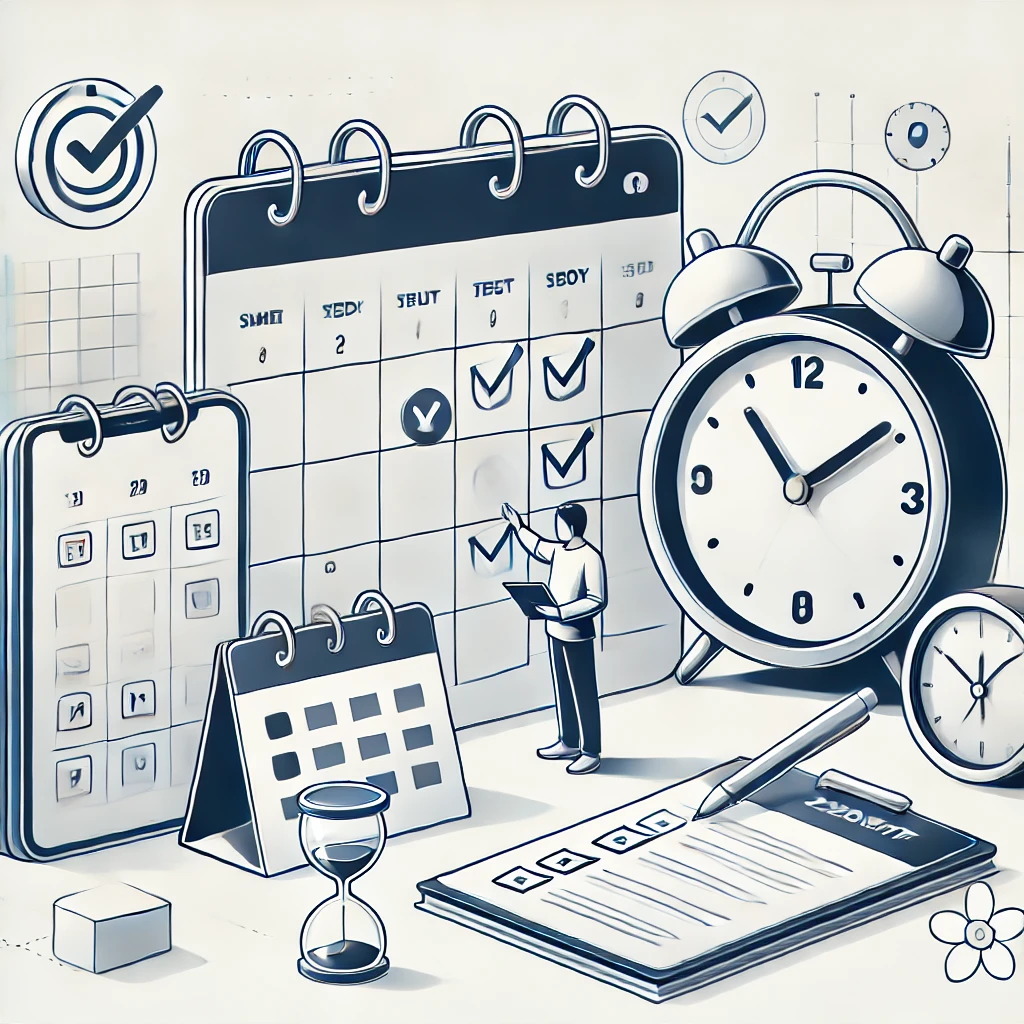
---
1. **Calendar Tools**
Calendars are essential for scheduling and organizing your time. Popular options include:
- **Google Calendar**: Sync across devices, set reminders, and share schedules with others.
- **Outlook Calendar**: Ideal for integrating with email and work tasks.
- **Apple Calendar**: A simple and effective tool for iOS users.
Use calendars to block time for tasks, appointments, and personal activities to ensure balance.
---
2. **Task Management Apps**
Task management apps help you organize and prioritize your to-do list. Some top options are:
- **Todoist**: A user-friendly app with task prioritization and progress tracking.
- **Microsoft To Do**: Integrates seamlessly with Microsoft tools.
- **Trello**: A visual tool using boards and cards to organize tasks and projects.
These apps ensure that no task slips through the cracks.
---
3. **Time Tracking Tools**
Understanding how you spend your time is key to improvement. Time tracking tools can help you identify inefficiencies:
- **Toggl Track**: A simple and effective app for logging time spent on tasks.
- **RescueTime**: Analyzes your daily habits and provides reports on productivity.
- **Clockify**: A free time tracker and timesheet app for teams and individuals.
Use these tools to pinpoint areas where you can save time.
---
4. **Note-Taking Tools**
Capture ideas, notes, and tasks quickly with these tools:
- **Evernote**: Organize notes, images, and documents in one place.
- **OneNote**: A versatile tool for creating and sharing detailed notes.
- **Notion**: Combines note-taking with task management for an all-in-one solution.
Note-taking tools help you stay organized and reduce mental clutter.
---
5. **Focus and Distraction-Blocking Tools**
Minimize distractions and maintain focus with these tools:
- **Forest**: Grow a virtual tree by staying off your phone while working.
- **Freedom**: Blocks distracting websites and apps for focused work sessions.
- **Cold Turkey**: A robust website and app blocker for deep work.
These tools ensure your time is spent productively.
---
6. **Habit Tracking Tools**
Build better habits to improve your time management:
- **Habitica**: Turn habits into a game with rewards for completing tasks.
- **Streaks**: Track daily habits and maintain consistency.
- **Loop Habit Tracker**: A free and simple app to monitor habit formation.
Habit tracking tools reinforce positive behaviors that enhance time efficiency.
---
7. **Collaboration Tools**
For team projects, collaboration tools keep everyone on the same page:
- **Slack**: Streamlines communication with channels and direct messaging.
- **Asana**: Tracks project progress, assigns tasks, and meets deadlines.
- **Monday.com**: A visual platform for managing projects and workflows.
Collaboration tools prevent miscommunication and streamline teamwork.
---
8. **Mind Mapping Tools**
Organize thoughts and plan effectively with visual tools:
- **MindMeister**: Create and share mind maps for brainstorming and planning.
- **Coggle**: Simple, user-friendly mind-mapping software.
- **XMind**: A professional tool for structured and creative mapping.
Mind maps help clarify complex ideas and ensure thorough planning.
---
9. **Automation Tools**
Save time by automating repetitive tasks:
- **Zapier**: Connects apps and automates workflows.
- **IFTTT (If This Then That)**: Simplifies automation with easy-to-create applets.
- **Calendly**: Automates scheduling by syncing calendars and sending invites.
Automation tools free up time for more meaningful work.
---
10. **Physical Tools**
Sometimes, simple physical tools can make a big difference:
- **Planners and Journals**: Great for writing down tasks, goals, and reflections.
- **Timers (e.g., Pomodoro Timers)**: Break work into focused intervals with timed breaks.
- **Whiteboards**: Ideal for visualizing tasks and tracking progress in real time.
---
Conclusion
Effective time management begins with the right tools. By incorporating these digital and physical resources into your routine, you can plan smarter, focus better, and achieve your goals with less stress. Experiment with these tools to find what works best for your needs and preferences. Time is your most valuable resource—manage it wisely.
Battling Time Poverty: Strategies for Effective Time Management
Battling Time Poverty: Strategies for Effective Time Management
Time poverty—the feeling of never having enough time to accomplish everything—is a growing issue in our fast-paced world. It can lead to stress, burnout, and reduced productivity. However, by implementing effective time management strategies, you can reclaim your time and focus on what truly matters.
Here are actionable strategies to combat time poverty and make the most of your days:
---
1. **Prioritize Ruthlessly**
Not all tasks are created equal. Use the Eisenhower Matrix to categorize tasks based on urgency and importance:
- **Important and Urgent:** Do these immediately.
- **Important but Not Urgent:** Schedule these for later.
- **Not Important but Urgent:** Delegate if possible.
- **Not Important and Not Urgent:** Eliminate these tasks altogether.
By focusing on what truly matters, you can free up time for high-value activities.
---
2. **Learn to Say No**
Saying yes to everything spreads your time and energy too thin. Politely decline commitments that don’t align with your priorities. Remember, every yes is a no to something else.
---
3. **Use Time Blocking**
Allocate specific blocks of time for different tasks or activities. Treat these blocks as appointments, ensuring you dedicate focused periods to work, rest, and personal growth. This method reduces decision fatigue and increases productivity.
---
4. **Limit Multitasking**
Multitasking can make you feel productive, but it often reduces efficiency and increases errors. Focus on one task at a time to complete it more effectively and reduce the mental strain of switching between activities.
---
5. **Automate and Delegate**
Identify repetitive tasks and look for ways to automate them. For example, use scheduling tools for meetings or apps for reminders. Delegate tasks to others when possible to focus on higher-priority responsibilities.
---
6. **Practice the Two-Minute Rule**
If a task takes less than two minutes, do it immediately. This simple rule prevents small tasks from piling up and overwhelming your to-do list.
---
7. **Track Your Time**
Spend a week tracking how you use your time. This exercise can reveal patterns and time-wasters, helping you make informed adjustments to your schedule.
---
8. **Create Buffer Times**
Avoid back-to-back scheduling by adding buffer times between tasks. These breaks allow you to recover mentally and handle unexpected delays without derailing your day.
---
9. **Set Boundaries**
Protect your time by setting clear boundaries. For instance, establish work hours, limit screen time, and communicate your availability to others.
---
10. **Reflect and Adjust**
Regularly review your schedule and progress. Are your current strategies helping you achieve your goals? If not, make adjustments. Continuous reflection ensures your time management evolves with your needs.
---
Conclusion
Time poverty doesn’t have to control your life. By adopting these time management strategies, you can regain control of your schedule, reduce stress, and focus on what truly matters. Remember, time is your most valuable resource—use it wisely and intentionally.
Time Management: The Art of Taking Control of Your Day
Time Management: The Art of Taking Control of Your Day
Ever feel like there aren't enough hours in the day? You're not alone. Effective time management isn't about squeezing more tasks into your schedule – it's about making intentional choices with the time you have. Let's explore practical strategies to revolutionize how you manage your time.
Start With a Time Audit
Before you can improve your time management, you need to know where your time is actually going. For one week, track every activity in 30-minute blocks. You might be surprised to discover how much time is lost to:
- Unnecessary meetings
- Social media scrolling
- Multitasking
- Unplanned interruptions
The Power of Prioritization
Not all tasks are created equal. Use the Eisenhower Matrix to categorize your tasks:
Urgent & Important: Do immediately
Important but Not Urgent: Schedule it
Urgent but Not Important: Delegate if possible
Neither Urgent nor Important: Eliminate it
Time-Blocking: Your Secret Weapon
Instead of working from an endless to-do list, assign specific time blocks for different activities. This includes:
- Deep work sessions
- Email management
- Creative thinking
- Personal time
- Buffer time for unexpected issues
The 80/20 Rule in Action
Apply the Pareto Principle to your work: 20% of your efforts typically generate 80% of your results. Identify your high-impact activities and prioritize them during your peak energy hours.
Productivity Enhancers
Focus Sessions
Use the Pomodoro Technique: 25 minutes of focused work followed by a 5-minute break. This maintains high concentration while preventing burnout.
Energy Management
Map your tasks to your natural energy levels:
Morning: Complex problem-solving
Afternoon: Administrative tasks
Evening: Planning and review
Digital Minimalism
- Turn off notifications
- Check email at scheduled times
- Use website blockers during focus sessions
- Keep your phone in another room during deep work
The Art of Saying No
Time management often comes down to choice management. Learn to:
- Decline non-essential meetings
- Set clear boundaries
- Delegate effectively
- Avoid overcommitment
Common Time Traps to Avoid
Perfectionism
Set realistic quality standards. Not every task needs to be perfect – sometimes good enough is good enough.
Meeting Overload
- Question if you really need to attend
- Request an agenda beforehand
- Suggest shorter meeting times
- Stand-up meetings for quick updates
Multitasking Myth
Focus on one task at a time. Studies show multitasking can reduce productivity by up to 40%.
Creating Sustainable Systems
Morning Routine
Start your day with intention:
- Plan your top priorities
- Review your schedule
- Set realistic goals
Weekly Planning
Dedicate time every Sunday or Friday to:
- Review upcoming commitments
- Plan major tasks
- Identify potential challenges
- Schedule buffer time
The Power of Automation
Identify repetitive tasks that can be automated:
- Email templates
- Bill payments
- Social media posting
- Report generation
Measuring Success
Track these indicators to gauge improvement:
- Task completion rates
- Focus session duration
- Number of interruptions
- Energy levels throughout the day
- Quality of work output
Remember: Progress Over Perfection
Time management is a skill that develops with practice. Start with one or two strategies and build from there. The goal isn't to become a productivity machine but to create space for what truly matters in your work and life.
Action Steps to Take Today:
1. Conduct your time audit
2. Identify your top three time-wasters
3. Schedule tomorrow's most important task
4. Set up your first time-blocking schedule
5. Choose one productivity tool to implement
Your time is your most valuable resource. Manage it wisely, and you'll not only accomplish more but enjoy greater peace of mind and satisfaction in both your professional and personal life.
Time Management: The Art of Taking Control of Your Day
Time Management: The Art of Taking Control of Your Day
Ever feel like there aren't enough hours in the day? You're not alone. Effective time management isn't about squeezing more tasks into your schedule – it's about making intentional choices with the time you have. Let's explore practical strategies to revolutionize how you manage your time.
Start With a Time Audit
Before you can improve your time management, you need to know where your time is actually going. For one week, track every activity in 30-minute blocks. You might be surprised to discover how much time is lost to:
- Unnecessary meetings
- Social media scrolling
- Multitasking
- Unplanned interruptions
The Power of Prioritization
Not all tasks are created equal. Use the Eisenhower Matrix to categorize your tasks:
Urgent & Important: Do immediately
Important but Not Urgent: Schedule it
Urgent but Not Important: Delegate if possible
Neither Urgent nor Important: Eliminate it
Time-Blocking: Your Secret Weapon
Instead of working from an endless to-do list, assign specific time blocks for different activities. This includes:
- Deep work sessions
- Email management
- Creative thinking
- Personal time
- Buffer time for unexpected issues
The 80/20 Rule in Action
Apply the Pareto Principle to your work: 20% of your efforts typically generate 80% of your results. Identify your high-impact activities and prioritize them during your peak energy hours.
Productivity Enhancers
Focus Sessions
Use the Pomodoro Technique: 25 minutes of focused work followed by a 5-minute break. This maintains high concentration while preventing burnout.
Energy Management
Map your tasks to your natural energy levels:
Morning: Complex problem-solving
Afternoon: Administrative tasks
Evening: Planning and review
Digital Minimalism
- Turn off notifications
- Check email at scheduled times
- Use website blockers during focus sessions
- Keep your phone in another room during deep work
The Art of Saying No
Time management often comes down to choice management. Learn to:
- Decline non-essential meetings
- Set clear boundaries
- Delegate effectively
- Avoid overcommitment
Common Time Traps to Avoid
Perfectionism
Set realistic quality standards. Not every task needs to be perfect – sometimes good enough is good enough.
Meeting Overload
- Question if you really need to attend
- Request an agenda beforehand
- Suggest shorter meeting times
- Stand-up meetings for quick updates
Multitasking Myth
Focus on one task at a time. Studies show multitasking can reduce productivity by up to 40%.
Creating Sustainable Systems
Morning Routine
Start your day with intention:
- Plan your top priorities
- Review your schedule
- Set realistic goals
Weekly Planning
Dedicate time every Sunday or Friday to:
- Review upcoming commitments
- Plan major tasks
- Identify potential challenges
- Schedule buffer time
The Power of Automation
Identify repetitive tasks that can be automated:
- Email templates
- Bill payments
- Social media posting
- Report generation
Measuring Success
Track these indicators to gauge improvement:
- Task completion rates
- Focus session duration
- Number of interruptions
- Energy levels throughout the day
- Quality of work output
Remember: Progress Over Perfection
Time management is a skill that develops with practice. Start with one or two strategies and build from there. The goal isn't to become a productivity machine but to create space for what truly matters in your work and life.
Action Steps to Take Today:
1. Conduct your time audit
2. Identify your top three time-wasters
3. Schedule tomorrow's most important task
4. Set up your first time-blocking schedule
5. Choose one productivity tool to implement
Your time is your most valuable resource. Manage it wisely, and you'll not only accomplish more but enjoy greater peace of mind and satisfaction in both your professional and personal life.
A Change Will Come
Why I Wrote "A Change Will Come" - And Why It's Different From Any Other Book on Change
I never intended to write a book about change. Like many of you, I was simply trying to figure out why transformation felt so hard. Why did I keep hitting the same walls? Why did my motivation always seem to fade? Why did other people make it look so easy?
It was a Tuesday morning when everything shifted. I was sitting in my favorite coffee shop, staring at yet another abandoned goal list, when I noticed something fascinating. The barista, Sarah, who had struggled with anxiety for years, was confidently managing the morning rush with a smile. Something had changed for her, and I had to know what it was.
"Small steps," she told me during her break. "I stopped trying to force myself to be different and started creating tiny changes that felt natural." She showed me her simple notebook where she tracked these small shifts. Nothing fancy – just daily notes about what worked and what didn't.
That conversation sparked a three-year journey of discovery. I spoke with hundreds of people who had successfully made lasting changes in their lives. Not just the usual success stories, but real people with real challenges – busy parents, overworked professionals, students juggling multiple responsibilities. People just like you and me.
A pattern emerged. Those who succeeded weren't necessarily more talented, more disciplined, or more motivated. They had simply discovered something crucial: sustainable transformation doesn't come from forcing change through willpower. It comes from creating the right conditions for change to happen naturally.
This revelation changed everything. I began experimenting with different approaches, testing various tools and systems. Some worked beautifully; others failed spectacularly. But each attempt taught me something valuable about how real change happens.
"A Change Will Come" is the book I wish I'd had years ago. It's not about pushing harder or doing more. It's about understanding how change actually works and using that knowledge to make transformation easier and more natural.
What makes this book different? It's built on real experiences – not just mine, but those of countless others who have successfully navigated significant life changes. It includes a practical toolkit that turns insights into action. Most importantly, it recognizes that your journey is unique. This isn't a rigid system you have to follow perfectly. It's a flexible approach that adapts to your life and your needs.
Inside, you'll find:
• Stories from real people who've overcome common challenges
• Simple tools that make change feel natural rather than forced
• Practical strategies for maintaining progress when motivation fades
• A comprehensive toolkit for turning insights into action
• Clear guidance for navigating setbacks and building momentum
But perhaps what's most important is what you won't find. No guilt trips. No unrealistic expectations. No one-size-fits-all solutions. Just practical wisdom and tools that work in real life.
One reader, Michael, recently told me something that touched my heart: "This book didn't make me feel bad about my struggles with change. Instead, it helped me understand them and gave me practical ways to move forward. For the first time, I feel like lasting change is possible for me."
That's exactly why I wrote this book. Because change is possible – not through force or friction, but through understanding and alignment. Whether you're looking to make a major life transition or simply want to build better habits, this book provides the roadmap and tools you need.
Your journey of transformation is unique to you. But you don't have to figure it all out alone. Let this book be your companion on the path to meaningful, lasting change.
The book is available now on Amazon. Click here to order.
Ready to begin?
- Audio Articles
- Audio Articles 1
- Audio Articles 2
- Audio Articles 3
- Audio Articles 4

7 Daily Disciplines That Transform Your Life
The power to act with intention, to align your actions with your values, and to move steadily toward a life of purpose—even on days you don't feel like it.
Read Full Article
How to Build Unbreakable Discipline
Discipline is built—habit by habit, choice by choice, day by day. And the most powerful kind? The kind that doesn’t crack under pressure. The kind that becomes part of who you are.
Read Full Article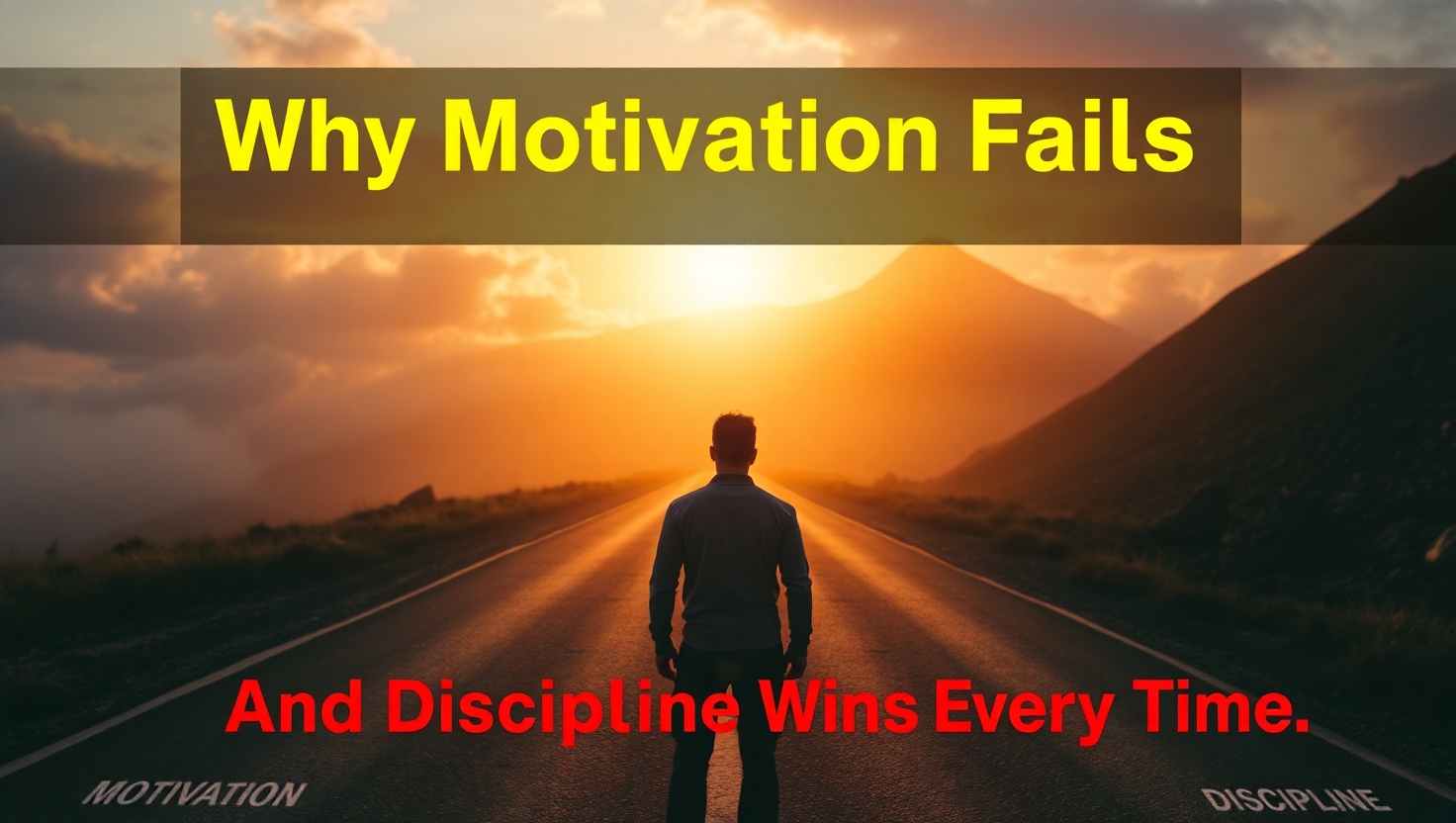
Why Motivation Fails And Discipline Wins Every Time
We all love the feeling of motivation—that surge of energy, that rush of inspiration that makes everything seem possible. But here’s the problem: motivation is unreliable. It’s emotional. It comes and goes. And if your goals rely on you “feeling like it,” you’re already in trouble.
Read Full Article
Discipline Over Desire
Desire is loud. It burns bright, talks fast, and loves to dream. But desire alone doesn't achieve much. Every person has desires. Very few have the discipline to bring them to life.
Read Full Article
The Science of Sticking
If you've ever tried to build a new habit, you've probably heard that it takes 21 days. This number gets thrown around so often that it feels like scientific fact.
Read Full Article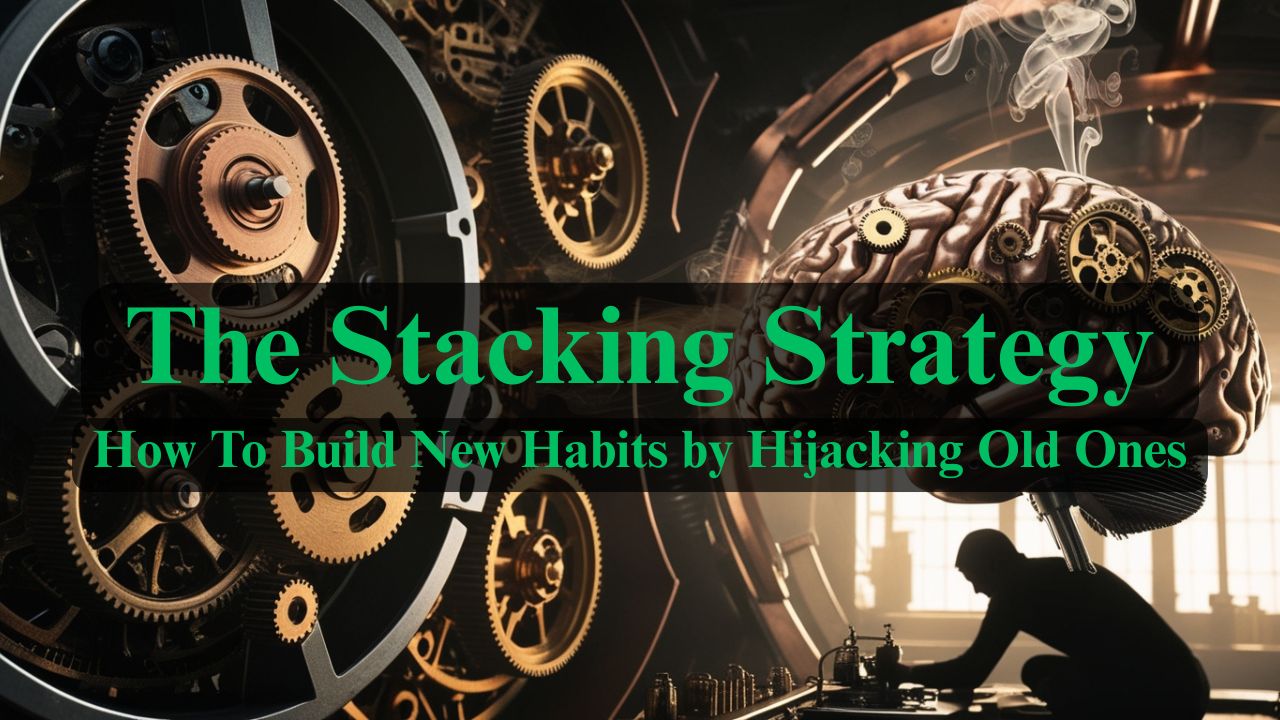
The Stacking Strategy
What if I told you that the habits you already have—even the ones you consider "bad"—could become the secret weapons for building the habits you want?
Read Full Article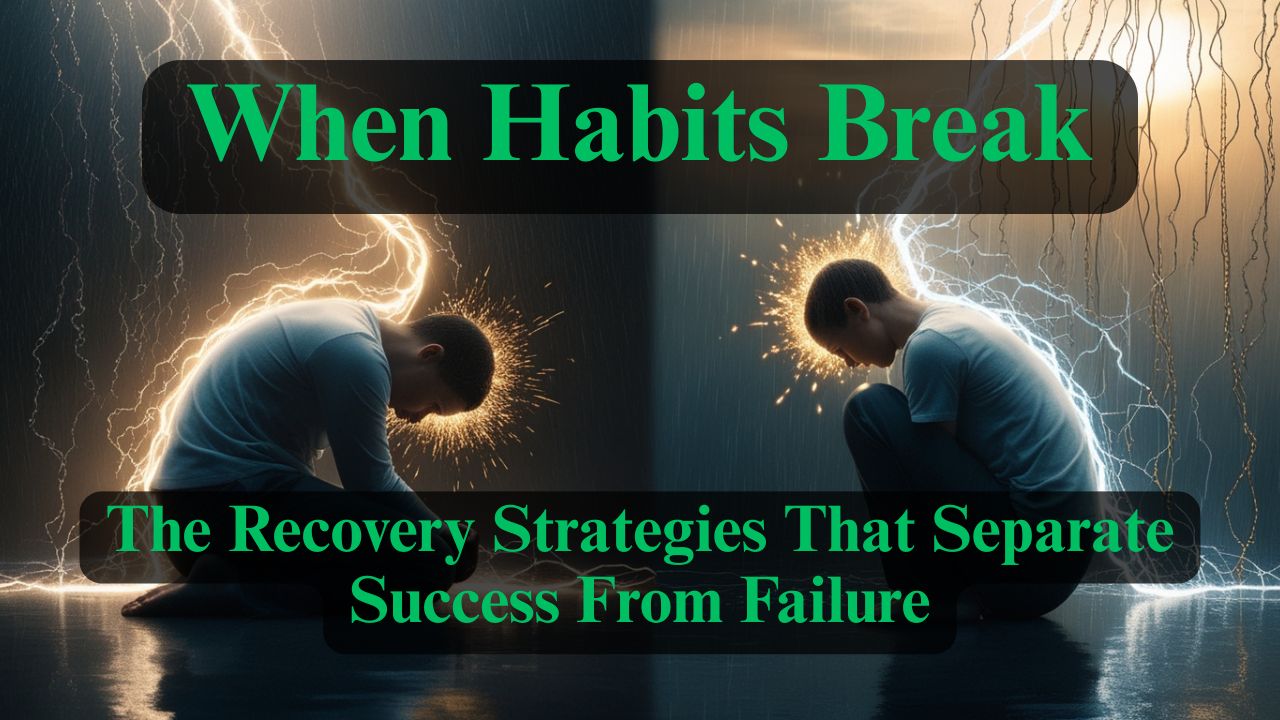
When Habits Fail - The Recovery Strategies That Separate Success From Failure
Here's what nobody tells you about building habits: you will fail. You'll miss days. You'll fall off track. You'll have weeks where everything falls apart.
Read Full Article
The Ultimate System - Designing a Life Where Good Habits Are Inevitable
You've learned to recognize habits, understand their formation timeline, stack them strategically, and recover from setbacks.
Read Full Article

